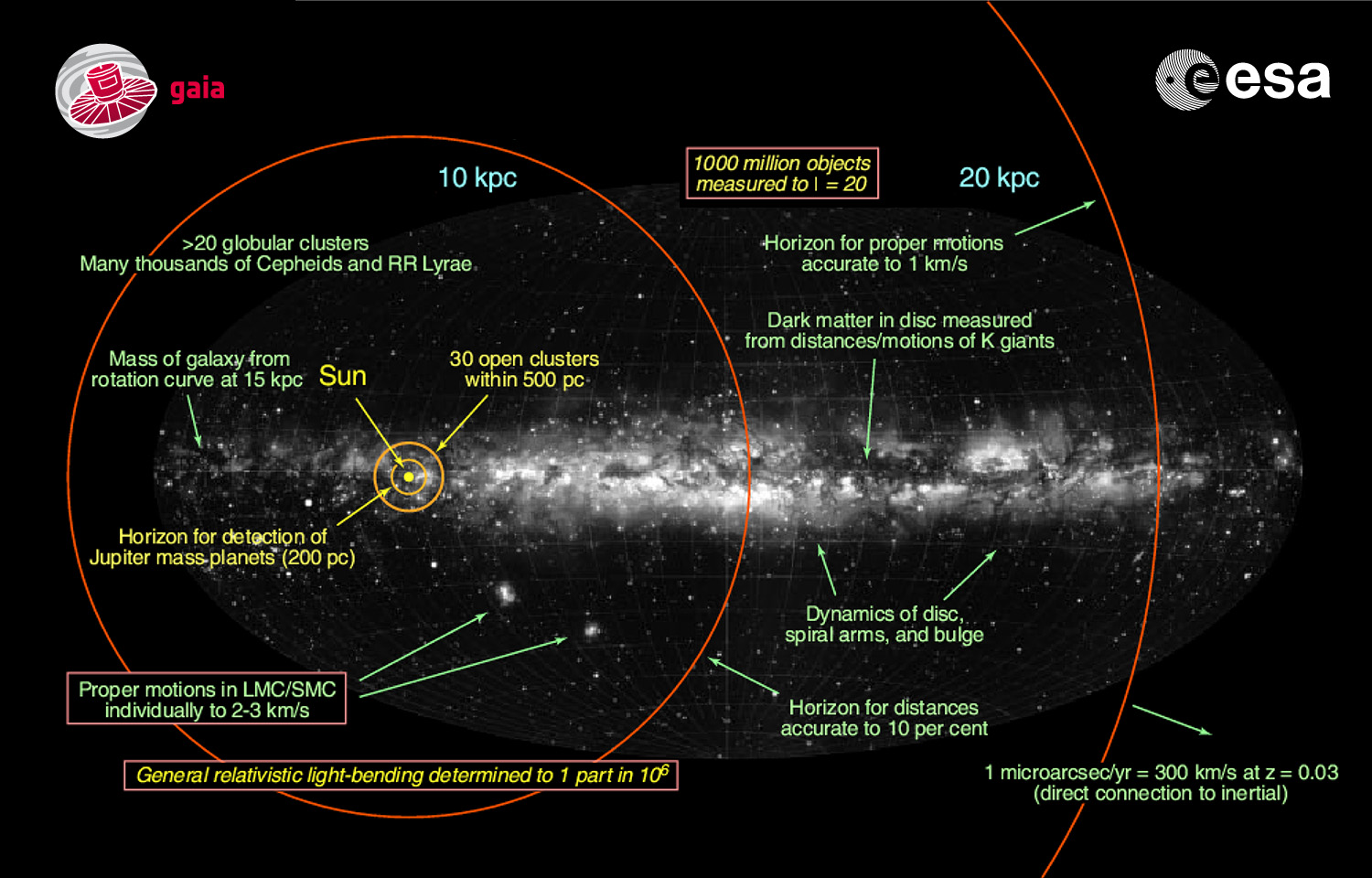Už za 2 týdny!!
Gaia Data Release set for 14 September | IEEC
http://www.ieec.cat/uncategorized/gaia-data-release-set-for-14-september/
The first Gaia data release, which will be available online on 14 September, will include the positions and
G magnitude for about one billion stars using observations taken between 25 July 2014 and 16 September 2015.
In addition, for a subset of data – about 2 million stars in common between the Tycho-2 Catalogue and Gaia –
there will be a five-parameter astrometric solution, giving the positions, parallaxes, and proper motions for
those objects. This is referred to as the Tycho-Gaia Astrometric Solution (TGAS).
Photometric data for RR Lyrae and Cepheid variable stars that were observed frequently during a special scanning
mode that repeatedly covered the ecliptic poles will also be made public.

